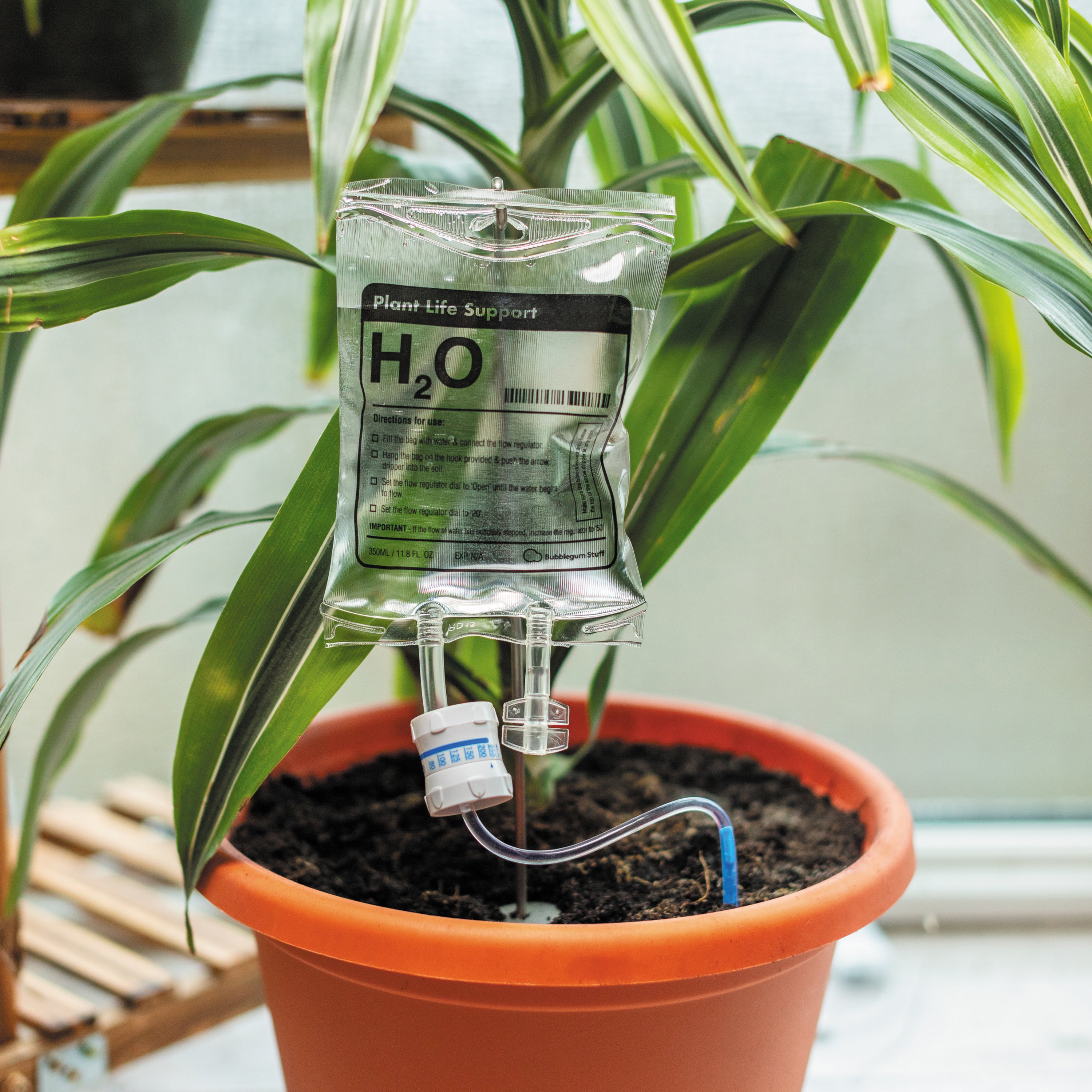

19 Fun Animal Facts That’ll Blow Your Mind
You’ll look at nature in a-hole-nother way thanks to these wonderfully weird animal facts...
The animal kingdom is a wondrous place. Here at Bubblegum Stuff, we’re all Rainforest Alliance Certified naturalists. Or, is it, naturists?? Never confident with that one.
Anyway… mother nature never ceases to provide us with magical material when brainstorming new product ideas. And during the research process for our new animal anus-based flashcard trivia game, Name That Bumhole, we came across some mind-blowingly fun animal facts we wanted to share with you.
So let's have a deep dive shall we...
The Pistol Shrimp - the fastest gun in the sea
Many creatures in the animal kingdom are given names that mislead, like the prairie dog, guinea pig or honey badger - latter being an especially good example since it’s known to target its victims genitals.
But the pistol shrimp is perfectly named. It’s definitely a shrimp, measuring a measly 4cm and weighing just 25 grams. And it’s definitely packing heat in the shape of its quick-snapping 60mph claws that create a superheated 4,500℃ bubble that immobilises its prey.
The sound of this snap can reach 218 decibels, which is louder than a bullet!
Sea Otters hold hands when they sleep

Sleeping in the swirling sea can be hazardous. Unless you anchor yourself, you’re not likely to wake up in the same spot you fell asleep in. That’s why sea otters entangle themselves in kelp or seaweed when they’re catching forty winks. And to make sure they all stick together they hold hands. How cute is that??
Short-horned lizards shoot blood from their eyes
Like something out of a nightmarish comic book, the short-horned lizard shoots its own blood out of its eyes when threatened. The jets of noxious liquid can reach up to 3m away, and it’s designed to send confused predators packing.
This Tolkein-esque power also has its practical applications. As the lizard will use it to remove foreign particles from the surface of its eyes.
Pangolins curl up into an armoured-plated ball when predators approach
Pangolins are a highly endangered species of mammal. Despite their plight, they’re still not that well known and are often confused with reptiles.
The scales that are responsible for this confusion are extremely robust. And when a predator such as a lion approaches, they simply curl up into a near bulletproof ball and wait for the big cat to lose interest.
Dolphins like to get high

No mammals were harmed in the taking of this photo.
Dolphins always look like they’re having a good time. Perhaps it’s because they like to get trippy under the ocean waves. They achieve their state of elevated consciousness by picking up pufferfish, which causes them to release their self-defensive toxin into the water.
This toxin can be deadly in high doses, but it’s a powerful hallucinogen when diluted. So the dolphins eagerly swim about in the cloud of trippy toxin and get as high as is presumably possible under the sea.
Colossal squids have eyes the size of basketballs
The colossal squid certainly fits into the accurately named creature category. With a combined body and tentacle length of 14m and a weight of 500kg, you wouldn’t want to tangle with one of these down in the deep.
Chances are, though, squiddy would spot you first since they’ve got basketball-sized eyes that can spy predator and prey from 120m away. Bet they have a hard job finding glasses!!
Albatrosses - some are lesbians
Like 90% of bird species, albatrosses mate and form bonds for life. These jumbo-winged seabirds return to the same place every year to raise their young.
But albatrosses are pretty progressive, as pairs aren’t always a male and a female. In fact, a study in one breeding area revealed that 31% of pairs were two females. You go girls!
The Donald Trump caterpillar is named after the ex-president’s hair
The bizarre-looking flannel moth caterpillar came to be known as the Donald Trump caterpillar since it bears an uncanny resemblance to the ex-president’s *ahem* hair.

What the Donald Trump caterpillar might look like on a dog's head.
The bright orange hair that coats the caterpillar is venomous, which makes grabbing hold of it quite a painful experience. If only Mr Trump experienced the same kind of pain when he tried to grab p*ssies without an invitation.
Baby elephants suck their trunk for comfort
In a not-so-accidental segway, we move on to the baby elephant.

These cute little Nellies are known to suck their trunk for comfort, much like human babies do with their thumbs. This usually continues until the elephant is about 6-8 months old, by which time they’ve figured out how to use the trunk to drink and eat.
Male seahorses carry babies and give birth

Seahorses, much like their close relatives the pipefish and seadragon, do things a little differently when it comes to reproduction. It’s the males that get pregnant and give birth to babies.
Only instead of growing the little seahorse in a uterus like a female would, the males carry them in a small pouch, a bit like a kangaroo’s pouch. That’s how they do it down under the sea.
Water boatman - the loudest animal relative to size
Measuring in at a teeny tiny 12mm long, the water boatman is the loudest animal relative to its size. By rubbing its genitalia across its abdomen, it’s able to produce a noise that registers 99 decibels. That’s roughly the equivalent of a jet taking off 300m away.
The Howler monkey is the loudest land animal

From the loudest animal relative to size to the loudest animal on land - the howler monkey can be heard long before it’s seen. We’re talking a good 3 miles away. And in the hustle and bustle of the South American rainforests, with plenty of other noises to compete with, that’s some achievement.
Howler monkeys’ calls have been known to reach 140 decibels, which is equivalent to the noise on a busy aircraft carrier deck.
Koalas’ fingerprints are almost identical to humans'
Even though our last common ancestor lived more than 100 million years ago, Koalas have fingerprints that are pretty much exactly the same as ours (assuming you’re also a human being). This is known as convergent evolution.
There have even been cases of koalas’ fingerprints confusing forensics teams at crime scenes!

Wombats have curiously cube-shaped poo
It’s true, wombats do have cubed poo. The angular shape and uniform size of each piece are caused by the drying of the faeces in the wombat’s colon.
It’s believed they use it to communicate with one another. Much in the same way artists such as Pablo Picasso and Georges Braque did during the Cubist movement of the early 20th-century.
Chickens are the closest living relative to the T-rex

This one comes as no surprise really. When you look at a chicken, don’t they just look like a tiny Tyrannosaurus rex??
In 2003, collagen from a big femur bone of a long-since-deceased T-rex was cross-examined with 21 living animals and it was found to be most similar to chickens and ostriches. Coming in at third place was the alligator.
Perhaps the real Jurassic Park is your local chicken farm.
The axolotl can regrow limbs
OK, you’ve probably never heard of the axolotl, you’ve probably never seen one and you probably have no idea how to even pronounce the word. You’re not alone. (It’s ak-suh-lo-tl, FYI.)

But what's the most interesting thing about this little-known creature? Not that it resembles a kind of tiny mythical eastern dragon, but it can regrow its limbs when it loses them (we gave it away in the title didn’t we… ).
Male giraffes drink female giraffes’ urine to help gauge the best time to mate

This may or may not seem disgusting, depending on your sexual fetishes. But male giraffes do indeed go in for a good gulp of a female’s urine to test whether or not it’s fertile.
If it is, that’s when the courtship begins. And that involves a lot of following the female around until she gives in, which is when they get down to business.
Octopuses have three hearts

Imagine how much love an octopus can give with three hearts… This unusual amount of blood-pumping organs is partly a consequence of having blue blood. Two peripheral hearts do the job of pumping the blood through the gills to pick up oxygen, and the central heart circulates that blood around the body.
But if you think three hearts is excessive, what do you think about them having 9 brains?! With all those brains and tentacles, imagine how quickly they’d complete a sudoku!
Cockroaches can live for weeks without their head

Ending on the ultimate survival machine, cockroaches are full of surprises. But one of the most surprising is they can keep going long after a beheading. That’s not because roaches possess powers of the macabre, but because they have multiple nervous systems that feature brains in both their head and their body.
Cockroaches could actually survive indefinitely without their head if they didn’t need their mouth to eat and drink.
Sorry to leave you with roaches, but we thought that final fact was the most mind-blowing (pardon the wordplay) of the lot.
Some of these facts feature in our new game, Name That Bumhole, which is a hilarious and cheeky take on animal trivia. It’s a collection of bums, quizzical questions and fun facts relating to all walks (crawls, slithers and flies) of life.

From domestic dogs to wild wolves, turkeys and turtles, there are loads of animals to explore.
Name That Bumhole gives you the chance to show off everything you know about the lesser spotted part of the animal anatomy. There’s also no cheekier stocking filler as far as we’re concerned.
And what’s more, it’s suitable for the “hole” family!




















